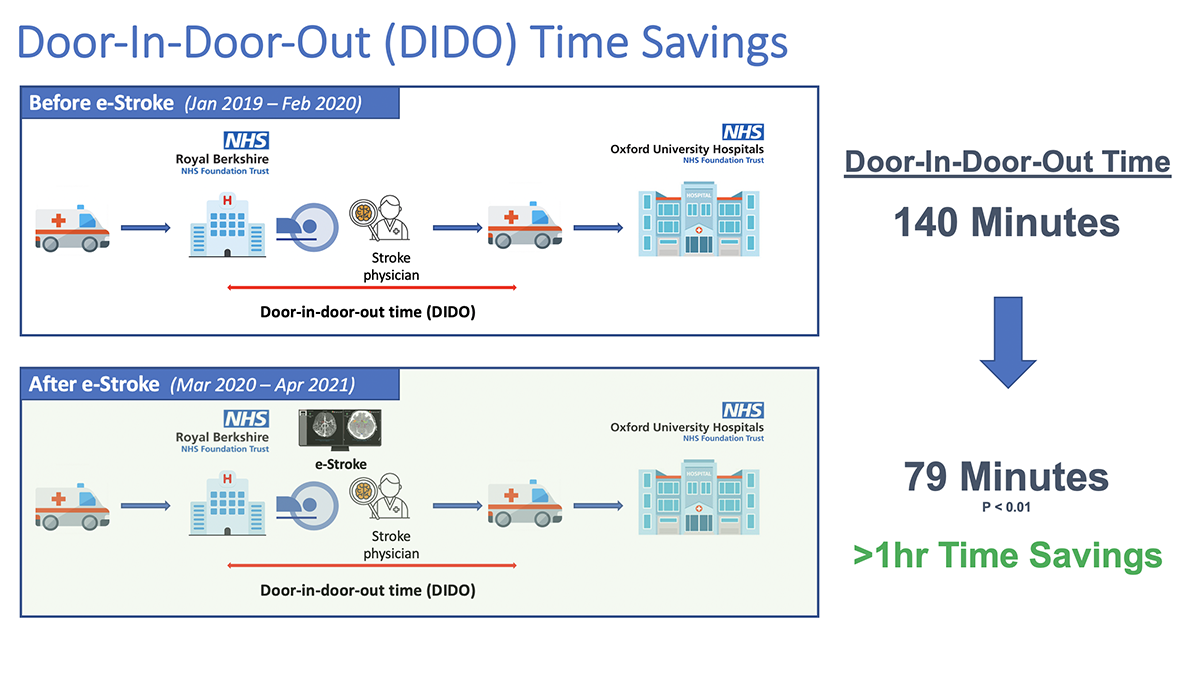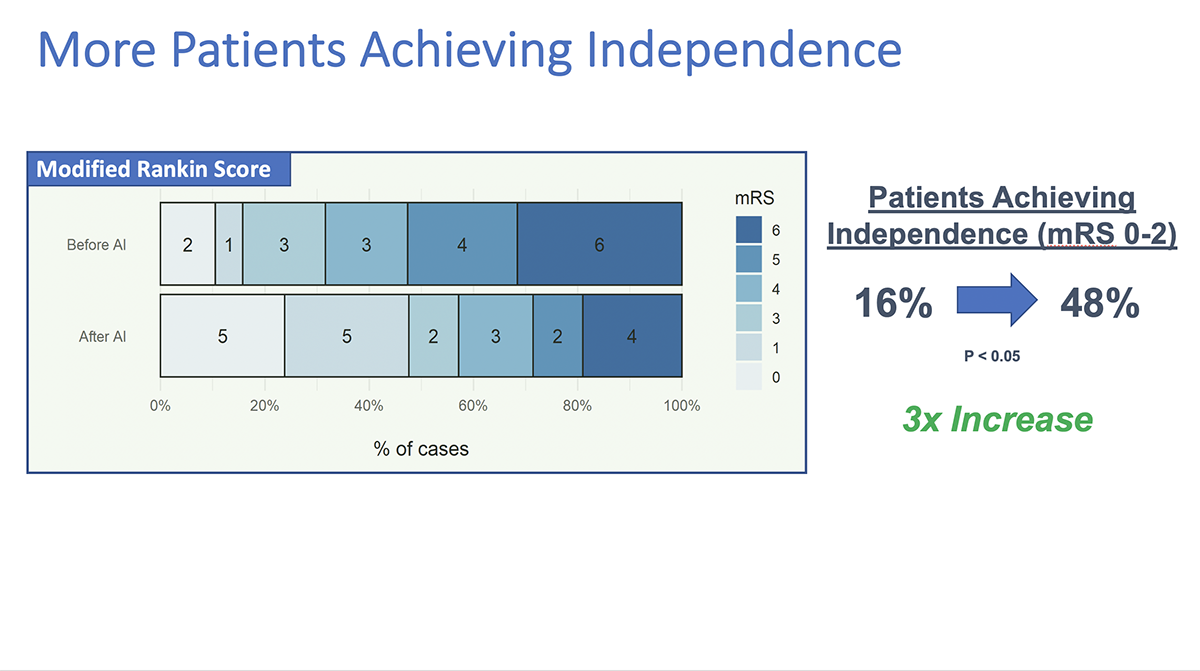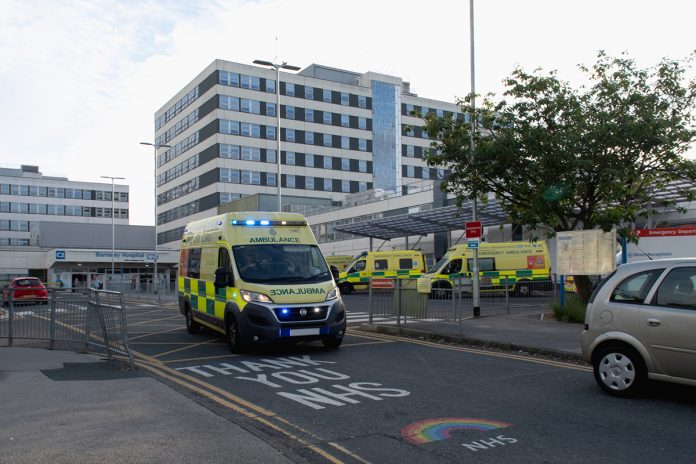Jeff Wyrtzen, Chief Marketing & Business Development Officer at Brainomix reveals the findings of a new study showing that the e-Stroke software shortens treatment times, hugely benefitting stroke patients
A new study presented at the 13th World Stroke Congress found that the implementation of Brainomix’s e-Stroke software resulted in faster treatment times, enabling more stroke patients to achieve functional independence when compared with a cohort of stroke patients treated prior to the software’s implementation.
The study results were presented by Dr Kiruba Nagaratnam, Clinical Lead for Stroke Medicine at the Royal Berkshire Hospital, where e-Stroke was first implemented in March 2020 to facilitate faster diagnosis and decision making. As part of the Thames Valley stroke network, the hospital in Reading routinely provides stroke care such as thrombolysis to the more than 700 stroke patients it admits each year, achieving rates in excess of 25%. It also transfers patients with large vessel occlusion to Oxford and Charing Cross hospitals for mechanical throm-bectomy.

To assess the impact of e-Stroke on the thrombectomy referral pathway, Dr Nagaratnam compared the results of all the patients referred for mechanical thrombectomy across two time periods:
- Those admitted before e-Stroke’s implementation (January 2019 to February 2020).
- Those admitted after e-Stroke’s implementation (March 2020 to April 2021).
The results (summarised here) indicated a significant reduction in overall door-in-door-out time, from 140 minutes down to 79 minutes, an improvement of over one hour. More significantly, the study also found that more patients achieved functional independence (defined as mRS 0-2) following the adoption of e-Stroke, jumping from 16% to 48% of patients.
“After the introduction of the Brainomix system, a higher percentage of patients achieved functional independence – something we attribute mainly to the reduction in door-in-door-out time, as the AI system helped our stroke team identify large vessel occlusions faster, thus enabling the referral and transfer process to be initiated sooner,” noted Dr Nagaratnam. “Overall, Brainomix’s software has allowed us to deliver a more efficient pathway, make faster treatment decisions, and achieve better outcomes for our patients.”


Dr George Harston, Chief Medical & Innovation Officer at Brainomix, also commented on the study. “We congratulate Dr Nagaratnam and his colleagues at the Royal Berkshire on the publication of this study, with powerful results demonstrating the real-world impact that the e-Stroke platform can bring to stroke networks. Stroke is a time critical disease, where every minute counts. By empowering frontline physicians to make faster, more confident treatment and transfer decisions, the e-Stroke platform is giving more stroke patients a better chance at achieving a good outcome.”
What is e-Stroke and how does it work?
e-Stroke is an AI-powered stroke imaging solution developed by Brainomix that helps frontline doctors to quickly and accurately make treatment decisions for patients with stroke. e-Stroke uses AI to leverage more information out of simple imaging routinely acquired in all hospitals, as well as supporting analysis of more advanced imaging techniques used in borderline cases. e-Stroke also provides a platform for timely sharing of images between key healthcare professionals within and across stroke networks to facilitate stroke decision-making.
*Please note: This is a commercial profile











